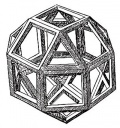Dutch language
From The Art and Popular Culture Encyclopedia
|
"In Holland not less than in England, after the example of Junius, a school of scholars arose, who studied the languages in their historical development and in comparison with each other. Arnold Moonen (1664-1711), William Sewel (1654-1720), Lambert ten Kate (1674-1731) and Balthazar Huydecoper (1695-1778) were the most prominent men of this school."--Holland's Influence on English Language and Literature (1916) by Tiemen de Vries Jemig de pemig!: de invloed van Van Kooten en De Bie op het Nederlands (1999) by Ewoud Sanders |
|
Related e |
|
Featured: |
Dutch is a West Germanic language spoken by around 23 million people, mainly in the Netherlands, Belgium and Suriname, but also by smaller groups of speakers in parts of France, Germany and several former Dutch colonies. It is closely related to other West Germanic languages (ie. English, Frisian and German) and (to a lesser degree) also the North Germanic languages. Dutch is a descendant of Old Frankish and is the parent language of Afrikaans, one of the official languages of South Africa. Dutch and Afrikaans are to a large extent mutually intelligible, although they have separate spelling standards and dictionaries and have separate language regulators. Standard Dutch (Standaardnederlands) is the standard language of the major Dutch speaking-areas and is regulated by the Nederlandse Taalunie ("Dutch Language Union").
See also
- Netherlandish Proverbs
- Afrikaans
- Geschiedenis van achternamen in Nederland
- Bargoens
- Bible translations (Dutch)
- Dutch braille
- Dutch grammar
- Dutch Language Union
- Dutch linguistic influence on military terms
- Dutch literature
- Dutch name
- Dutch orthography
- Dutch philosophy
- Dutch profanity
- Dutch-based creole languages
- Flemish
- French Flemish
- Grand Dictation of the Dutch Language
- Indo-European languages
- Istvaeones
- List of English words of Dutch origin
- Low Dietsch
- Low Franconian
- Meuse-Rhenish
- Middle Dutch
- Old Dutch
- Old Frankish
- Lijst van verwensingen gebaseerd op ziekte
- Hoofdletter in de Nederlandse spelling

